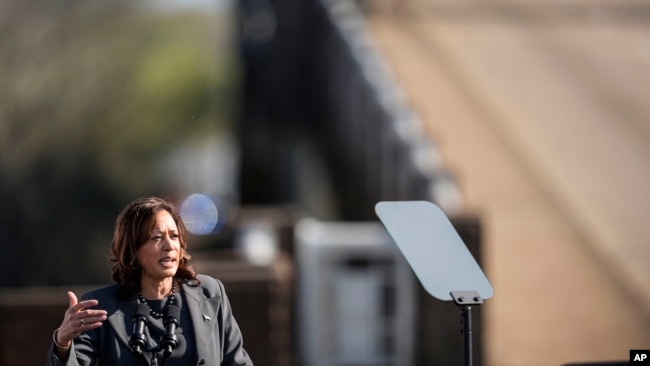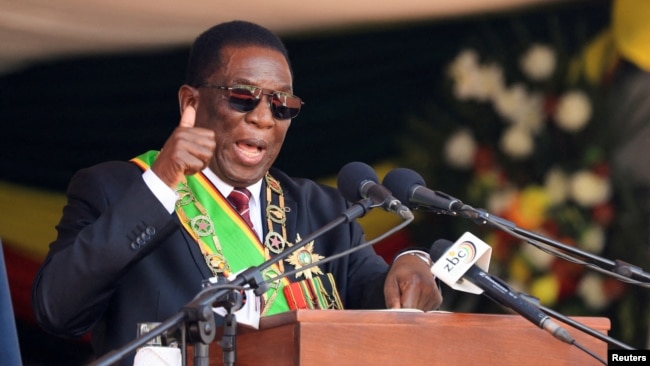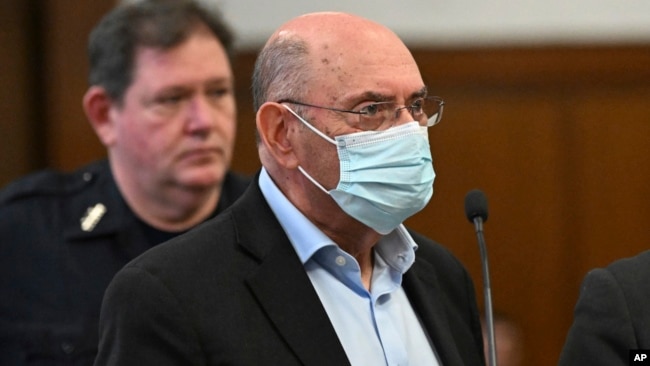CSIS "올 북한 곡물 생산 평년 수준 못 미쳐...북동부 식량 공급 악화 우려"
"The grain production in North Korea is less than average"."Concerned about worsening food supply in the northeast".
페이지 정보
작성자 김영권 작성일 21-10-06 01:40 댓글 0본문

지난 5월 북한 평양의 남사협동농장에서 농부들이 모내기를 하고 있다.
Farmers are planting rice at the Namsa Cooperative Farm in Pyongyang, North Korea, in May.
북한의 올해 곡물 생산량이 평년 수준을 밑돌아 주민들의 어려움이 지속될 것이란 전망이 이어지고 있습니다. 미국의 민간단체는 북한의 지난 7~8월 농작물 상태를 위성 자료를 통해 분석한 결과 평년 수준에 미치지 못했다며, 특히 북동부 지역의 식량 수급에 우려를 나타냈습니다. 김영권 기자가 보도합니다.
North Korea's grain production this year is below the average level, continuing to predict that difficulties for residents will continue. Private organizations in the U.S. said that North Korea's crop status between July and August was below the average level, especially expressing concern over the supply and demand of food in the northeastern region. Reporter Kim Young-kwon reports.
워싱턴의 민간단체인 전략국제문제연구소(CSIS)가 운영하는 한반도 전문 웹사이트 ‘분단을 넘어서’는 4일 북한의 농업 상황을 평가한 보고서에서 올해 곡물 생산량이 예년 수준을 밑돌 것으로 전망했습니다.
In a report evaluating North Korea's agricultural situation on the 4th, the Korean Peninsula website "Beyond Division," run by the Institute for Strategic International Studies (CSIS), a private organization in Washington, grain production is expected to fall below the previous year's level.
위성사진의 적색 파장과 근적외선 파장을 이용한 정규식생지수(NDVI) 산출법으로 7~8월 북한의 농작물 상태를 4단계로 나눠 분석한 결과 일부 지역에서 작황이 급격히 감소하는 등 부정적 결과가 나왔다는 겁니다.
As a result of analyzing North Korea's crop status in four stages using the red wavelength and near-infrared wavelength of satellite images, negative results were found, such as a sharp decrease in crops in some regions.
특히 이 기간 자강도와 강원도, 라선, 양강도 지역의 농경지 60% 이상이 최하급인 ‘불량’(Bad)과 ‘부실’(Poor) 상태로 나타났다고 보고서는 밝혔습니다.
In particular, more than 60% of farmland in Jagang-do, Gangwon-do, Raseon, and Yanggang-do during this period was found to be in "bad" and "poor," the report said.
또 북한의 5대 곡창지대인 평안남북도와 황해남북도, 평양은 7월 말까지 농작물의 40%가 ‘양호’(Good) 평가를 받았지만, 8월 초에는 황해남도를 제외한 다른 지역의 곡물이 차츰 시들기 시작했다고 지적했습니다.
It also pointed out that 40% of North and South Pyongan Province, North and North Hwanghae Province, and Pyongyang, North Korea's five major granaries, received "Good" evaluations by the end of July, but grains from other regions except South Hwanghae Province gradually began to wither in early August.
유엔 식량농업기구(FAO)가 7월 초 북한의 농작물 상태가 양호해 좋은 출발을 했다고 평가했지만 이후 상황이 전국적으로 악화됐다는 설명입니다.
The U.N. Food and Agriculture Organization (FAO) evaluated that North Korea's crops were in good condition in early July, but the situation has worsened nationwide since then.
이밖에 곡창지대 피해 이유로 기상 상태와 강수량 부족 등을 지적했는데, 실제로 북한 관영매체들은 당시 폭염으로 인한 가뭄으로 황해남북도 등 여러 지역에 농작물 피해가 이어지고 있다고 전했었습니다.
In addition, he pointed out weather conditions and lack of precipitation as reasons for damage to grain areas, and North Korean state media said that drought caused by the heatwave at the time was continuing crop damage to North and South Hwanghae Province.
보고서는 8월 중순이면 일반적으로 농작물이 최고의 상태를 유지해야 하지만 북한 대부분 지역에서 미흡했다며, 특히 황해북도는 앞서 최고 상태인 ‘양호’(Good)에서 25%가 아래 단계로 내려갔고, 약 20%는 ‘부실’에서 ‘불량’으로 떨어졌다고 밝혔습니다.
The report said crops generally have to remain in their best condition in mid-August, but they are insufficient in most parts of North Korea, especially in North Hwanghae Province, with 25% falling from the previous highest "Good" to "bad."
황해남도 역시 8월 중순 들어 29%가 ‘양호’ 범위에서 이탈했고 23%는 ‘부실과 ‘불량’으로 내려갔으며, 평양도 17%가 ‘양호’에서 아래 단계로 내려가는 등 황해남북도와 평양이 평안남북도보다 농작물 상태가 더 부정적이라고 지적했습니다.
South Hwanghae Province also pointed out that North and North Hwanghae Province and Pyongyang are more negative than North and North Pyongan Province, with 29% out of the "good" range in mid-August, 23% down to "bad," and 17% down from "good."
그러면서, 북한이 아직 기근 위기 상황은 아니지만 지난해 낮은 수확량, 홍수로 인한 북동부 지역의 농작물 피해와 수송 시설 타격 등 외부 요인으로 불안정한 식량 상황이 더 악화될 것으로 전망했습니다.
North Korea is not in a famine crisis yet, but the unstable food situation is expected to worsen due to external factors such as low yields last year, damage to crops and transportation facilities in the northeast caused by floods.
게다가 가뜩이나 열악한 철도망 등이 홍수로 피해를 입으면서 동부와 북동부 산악지대 등 외딴 지역 주민들에 대한 식량 공급이 어려워질 수 있다고 밝혔습니다.
In addition, it said that the already poor railroad networks could be damaged by floods, making it difficult to supply food to residents in remote areas such as the eastern and northeastern mountainous regions.
양강도와 함경북도 지역 등은 북한의 대표적인 빈곤 지역으로, 식량을 대부분 중앙정부가 아닌 북-중 비공식 무역을 통해 충당해온 것으로 알려졌습니다.
Yanggang Province and North Hamgyeong Province are representative poor areas in North Korea, and most of the food has been covered by informal trade between North Korea and China, not by the central government.
전문가들은 코로나 차단을 위한 북한 당국의 국경 봉쇄로 중국에서 식량 수입이 어려워졌고, 철도망마저 홍수 등으로 타격을 받아 이 지역 주민들의 식량 사정이 더 악화될 수 있다고 우려했습니다.
Experts feared that the North Korean authorities' blockade of the border to block COVID-19 made it difficult to import food from China, and that even the railroad network could be hit by floods, which could worsen the food situation for residents in the region.
한국의 북한 농업 전문가인 권태진 GS북한동북아연구원장은 5일 VOA에, 이런 이유 때문에 “북한 북동부 지역의 식량 확보가 올해 굉장히 큰 문제가 될 수 있다”고 말했습니다.
Kwon Tae-jin, president of GS Northeast Asia Research Institute, a North Korean agricultural expert in South Korea, told VOA on the 5th that "securing food in northeastern North Korea could be a big problem this year."
[녹취: 권태진 원장] “전통적으로 북한의 북동부 지방은 중앙에서 식량을 공급받는 게 아니라 건너편의 중국과 공식 비공식 무역을 통해 식량을 확보합니다. 그런데 국경이 닫히니까 올해는 어쩔 수 없이 중앙에서 공급받아야 하는데 수송이 문제요. 양이 엄청나기 때문에. 과거에 그 지역에 식량을 조달했던 방식과 바뀌어야 하는데 이 수송이 하나의 걸림물이 되는 거죠.”
[Recording: Director Kwon Tae-jin] "Traditionally, the northeastern part of North Korea does not receive food from the center, but secures food through official informal trade with China across the street. However, since the border is closed, we have no choice but to receive it from the center this year, but transportation is a problem. Because the amount is huge. It has to be changed from the way the region was procured in the past, but this transportation is an obstacle."
북한의 올해 농산물 생산량이 예년 수준과 비슷하거나 적어 식량안보에 어려움이 가중될 것이란 경고는 이미 여름부터 계속 제기됐습니다.
Warnings have already been raised since the summer that North Korea's agricultural production this year will be similar to or less than the previous year's level, adding to food security difficulties.
유엔 식량농업기구(FAO)는 지난 6월 보고서에서 북한이 올해 110만t의 곡물을 외부에서 들여와야 할 것으로 추산했고, 미 농무부는 7월 말 보고서에서 북한의 올해 쌀 생산량이 최근 5년 평균치보다 10% 적을 것으로 전망했습니다.
The U.N. Food and Agriculture Organization (FAO) estimated in a June report that North Korea would have to bring 1.1 million tons of grain from outside this year, and the U.S. Department of Agriculture predicted in a report at the end of July that North Korea's rice production would be 10% less than the average for the past five years.
권태진 원장은 지난달 주한 미국대사관 주최로 서울에서 열린 비공개회의에서 미 농무부 관계자와 유럽 단체 모두 올해 북한의 단위면적당 곡물 수확량이 예년과 비슷할 것으로 분석했다고 말했습니다.
Director Kwon Tae-jin said at a closed-door meeting in Seoul hosted by the U.S. Embassy in South Korea last month that both U.S. Department of Agriculture officials and European organizations analyzed that North Korea's grain yield per unit area will be similar to that of previous years.
권 원장은 그러나 전체 곡물 생산량은 단위면적당 생산량에 재배면적을 곱해야 하는데, 벼 재배면적이 가뭄 등으로 최근 계속 감소하고 있어 수확에 부정적 영향을 미칠 수 있다고 지적했습니다.
Director Kwon, however, pointed out that the total grain production should be multiplied by the cultivation area per unit area, which could have a negative impact on harvest as the rice cultivation area has continued to decline recently due to drought.
[녹취: 권태진 원장] “문제는 재배면적입니다. 최근 몇 년 동안 벼 재배면적이 평년 수준보다 낮았어요. 따라서 올해 쌀 생산량은 평년보다 낮을 것이다, 수량도 낮고 재배면적도 낮기 때문에 쌀은 올해 약간의 타격을 받았다고 평가합니다.”
[Recording: Director Kwon Tae-jin] "The problem is the cultivation area. In recent years, the area of rice cultivation has been lower than the average. Therefore, this year's rice production will be lower than usual, and we evaluate that rice has been hit a little this year because of its low quantity and low cultivation area."
권 원장은 “다만 콩 재배면적은 옥수수 재배지를 대체하면서 늘고 있다”며 올해 북한의 전반적인 곡물 수확량은 평년을 약간 밑도는 수준이 될 것으로 여러 단체와 전문가들이 진단하고 있다고 말했습니다.
Director Kwon said, "However, the area of soybean cultivation is increasing by replacing corn cultivation," adding that North Korea's overall grain yield this year will be slightly below the average year.
VOA 뉴스 김영권입니다.
I'm Kim Young Kwon from VOA News.
출처 : VOA한국
- 이전글 Biden은 부채 한도를 높이기 위해 필리버스터 '실제 가능성'을 우회한다고 말합니다.
- 다음글 나이지리아인들은 새로운 디지털 통화 eNaira의 출시에 대해 낙관하고 있습니다.
댓글목록 0
등록된 댓글이 없습니다.

















